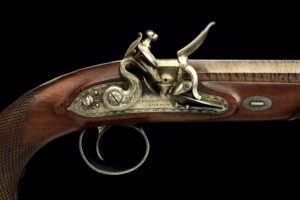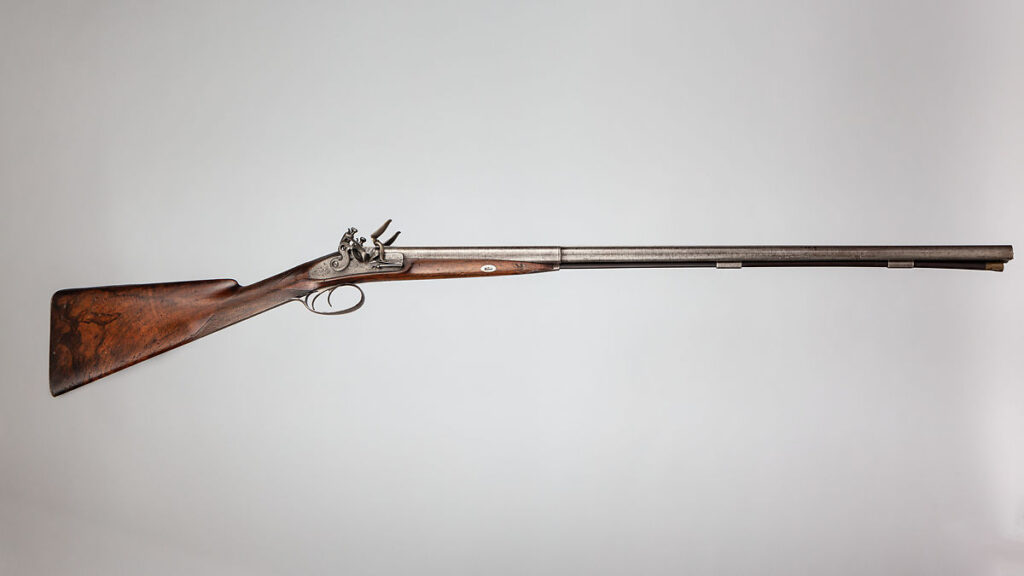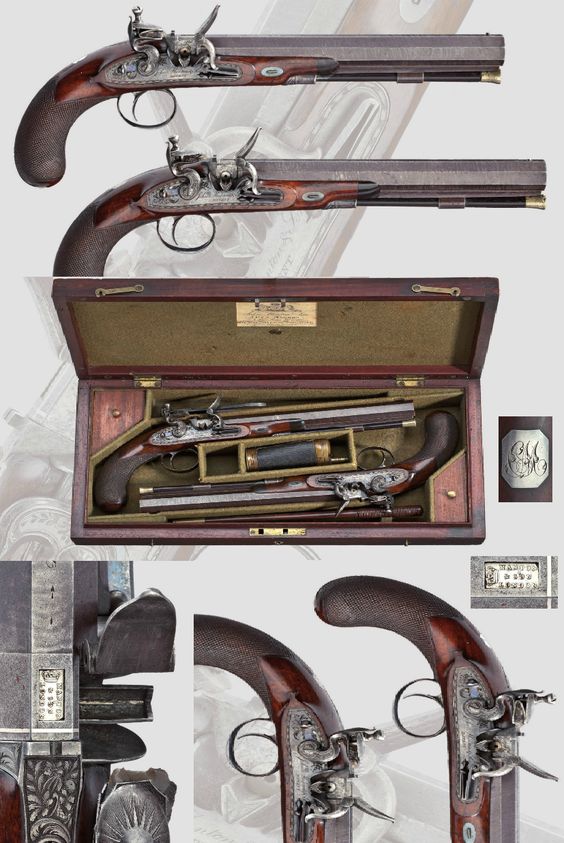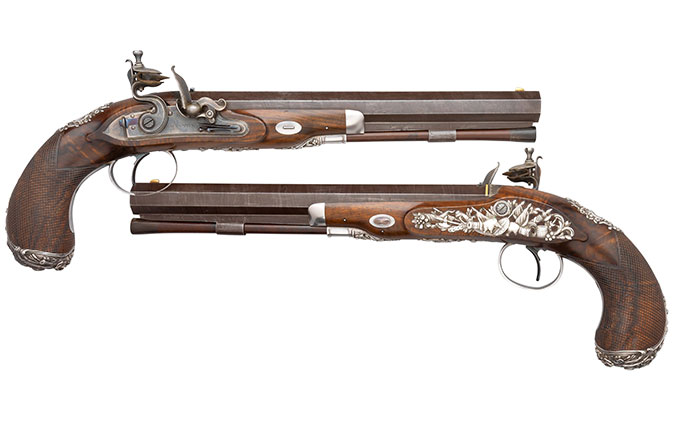By
Louisa Cornell
Manton’s
25 Davies Street, Berkeley Square
Established 1792
Joseph Manton was born in Grantham, Lincolnshire in 1766, and at the age of 14 was apprenticed to a local gunmaker. In 1781, he began working under his brother, John Manton, a gunmaker of 6 Dover Street, London.
In 1789, at the age of 23, Joseph started out on his own, working mostly on ways to improve rifling and wadding. His fantastic and modern ideas garnered interest from the British government and he was given patronage to explore many of his ideas further. Joseph Manton’s fame spread rapidly. He would go on to register twice as many patents as any other gunmaker.
In 1792 he opened his Mayfair gun shop which was soon patronized by prominent businessmen, leading politicians and nobility. He was awarded a Royal Warrant as well as lucrative contracts from the East India Company. Manton also opened his famous shooting gallery at No. 25 as the young bucks called it. A smart business move, as it allowed potential customers to fire Manton’s various guns before deciding to place an order for one themselves.
Captain Gronow wrote of visiting the shooting gallery:
When in London, Byron used to go to Manton’s shooting gallery in Davies Street, to try his hand, as he said, at a wafer. Wedderburn Webster was present when the poet, intensely delighted with his own skill, boasted to Joe Manton that he considered himself the best shot in London. “No, my lord,” replied Manton. “not the best, but your shooting today was respectable,” upon which Byron waxed wroth, and left the shop in a violent passion.
Lords Byron, Yarmouth, Pollington, Mountjoy, Walliscourt, Blandford, Captain Burges, Jack Bouveric, and myself were in 1814, and for several years afterwards, amongst the chief and most constant frequenters of this well-known shooting gallery, and frequently shot at the wafer for considerable sums of money. Manton was allowed to enter the betting last, and he generally backed me. On one occasion, I hit the wafer nineteen times out of twenty.
Manton is credited with the invention of the tubelock in 1814. This was really the precursor to the percussion cap, and was an important milestone on the path from flintlock to percussion cap guns. The principal was very simple – instead of using a bit of flint to generate a spark on steel to ignite powder, the hammer instead struck down on a pill of ‘fulminate of mercury’ wrapped in copper. When struck, the pill would explode, the flame igniting the main powder charge. Although this technology was superseded in 1822 by a cup filled with fulminate (the percussion cap), it was nevertheless an important step in firearms manufacture. Plenty of sportsmen adopted it as well as a variation that was adopted by the Austrian military.


Joseph Manton was firm friends with Colonel Peter Hawker, a great sportsman and pioneering wildfowler. They worked together to produce some of the fowling pieces of the muzzle-loading era, and really turned the ‘fowling piece’ into the ‘sporting shotgun’ that we recognize today. The idea of making a sporting shotgun a thing of beauty began with Manton. His skill as a silversmith was nearly as great as his skill as a gunmaker. Many of his guns were considered works of art. In fact, his guns were so beautifully made they are still highly sought today.

ca. 1837
Manton is also credited with paving the way to breech-loading guns. This started with the development of a disposable cannon cartridge. Instead of loading all pieces independently into the front of the gun, a wooden cup (cut to fit down the rifling on a rifled cannon barrel) was attached to a bag of powder, which in turn was attached to a cannon ball. This self-contained ammunition was also available for smaller guns, and was the start of what we know today as modern bullets.
All of these techniques came together in the development of Manton’s dueling pistols which had a reputation for a truer aim than any pistols in England. As many deaths in duels were a result of poorly aimed pistols and weapon malfunction, Manton’s pistols became the chosen weapon for all duels where the purpose was merely to satisfy one’s honor rather than to kill one’s opponent.

Manton did all of this research and development in conjunction with the British army, with the army lending Manton a gun and ongoing investment. When Manton went to bill the army for his work, they fell out, as the army felt Manton wanted too much (£30,000 in 1820 works out as £3,500,000, give or take a few quid). Manton had patented the design already so the army had to pay him to use it – their offer was one farthing per shell (a farthing was ¼ of a penny or 1/960 of a pound – equivalent today to £0.13 per shell). Although the production rate of shells would have been great, this did not agree with Manton and he refused the offer. During the long dispute, the army was still allowed to make shells, but had to buy the wooden cups from Manton.
In the end, the army won out, Manton lost the legal battle and his fortune along with it. In 1826, the great man was declared bankrupt, the bank seizing his workshop on Oxford Street as well as his large stock of guns. Although the company tried to restart, increasing debts forced its closure once again, leaving Joseph Manton in debtors’ prison between 1828 and 1829.
Manton’s gun shop produced a generation of gunmakers that made London gunmaking what it is today. James Purdey, Thomas Boss, William Moore and Charles Lancaster all worked for him and these four men alone went on to found some of the best gunmaking businesses of all time.
Joseph Manton died on 29 June 1835 at the age of 59. Colonel Hawker wrote in his epitaph that while his tomb may hold his mortal remains, ‘an everlasting monument to his unrivalled genius is already established in every quarter of the globe by his celebrity as the greatest artist in firearms ever the world produced, as the founder and the father of the modern gun trade, and as a most scientific inventor in other departments, not only for the benefit of his friends and the sporting world, but for the good of his king and country’.
